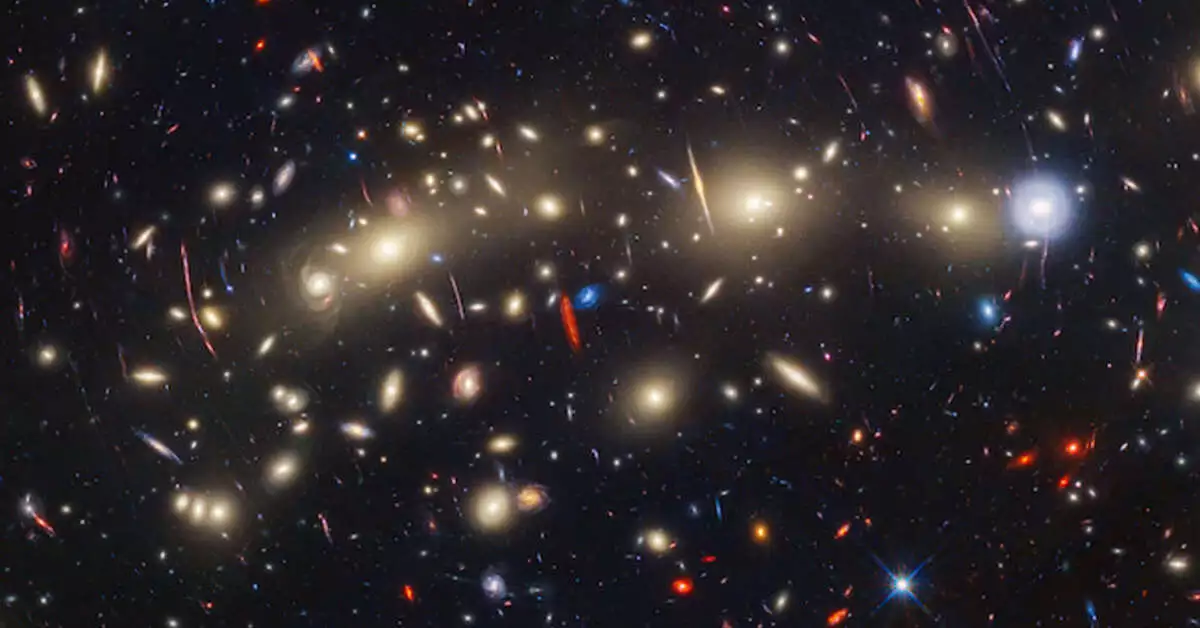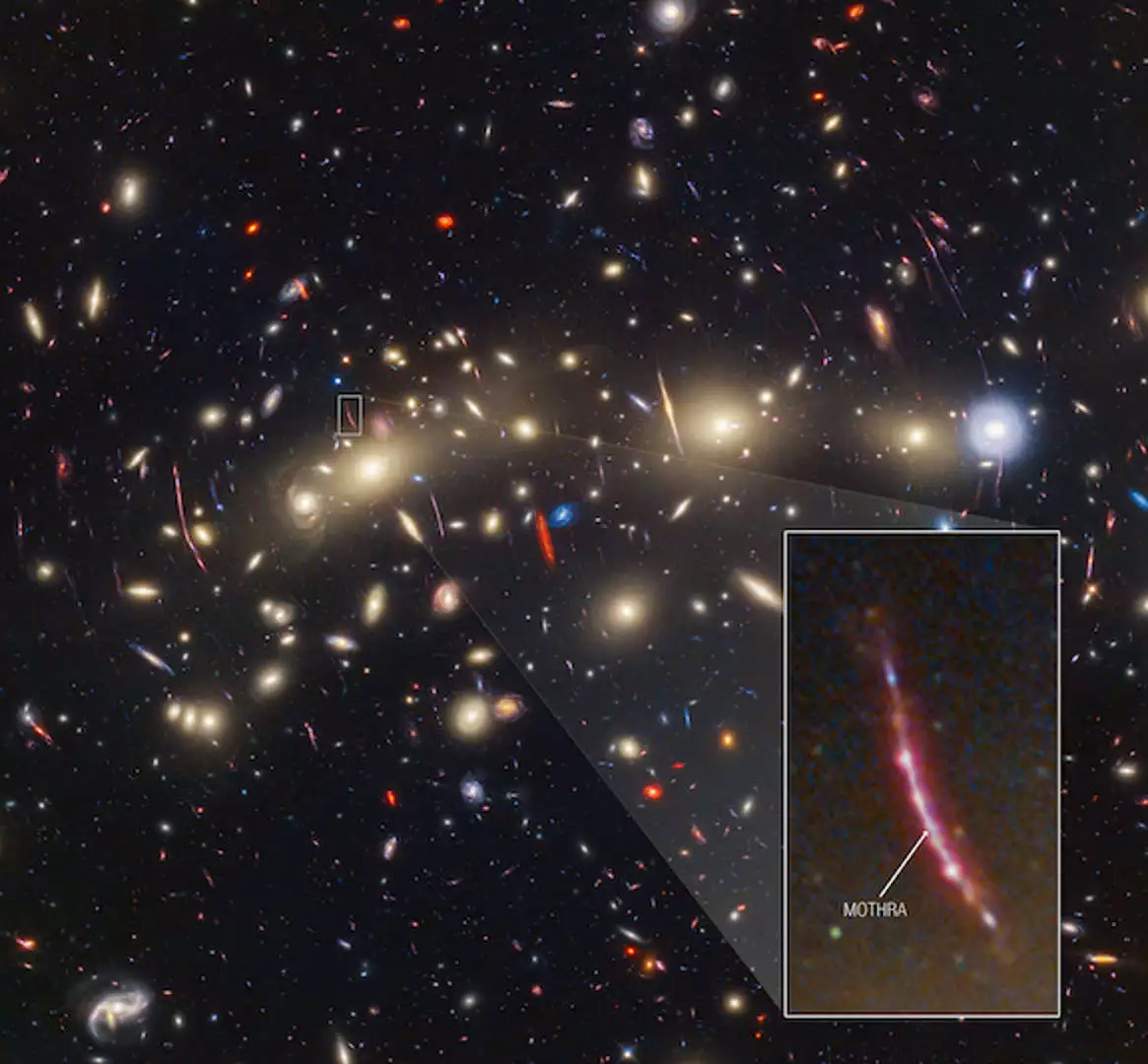In the vast expanse of the heavens, there exist celestial entities of staggering proportions, capable of bending the very fabric of space and time, akin to a colossal bowling ball sitting upon a cosmic mattress.

Recent efforts by NASA, in partnership with other space agencies, have culminated in the capture of a mesmerizing picture showcasing the grandeur of MACS0416, an immense cluster of galaxies. These cosmic entities, each housing billions or even trillions of stars with their accompanying planetary systems, clash in a cosmic dance, making an especially massive show. Utilizing the James Webb Space Telescope and the Hubble Space Telescope, scientists carefully watched MACS0416, unraveling the intricacies of its gravitational impact on our cosmic viewpoint.
ALSO READ: The Tsubame Archax – A $3 Million Gundam-Inspired Mecha for Earth and Lunar Ambitions
Described as a “natural magnifying glass,” MACS0416’s gravitational force is so powerful that it bends the space-time flow around it. As a result, light deviates from its linear trajectory, causing a phenomenon known as “gravitational lensing” — a phenomenon initially proposed by Albert Einstein’s General Theory of Relativity.
The resultant picture, a harmonious fusion of diverse light wavelengths recorded by Hubble (visible light) and Webb (infrared light), shows a tapestry of contorted, stretched, and warped cosmic objects surrounding the center frame. The main goal of this celestial journey, covering 22 hours for Webb and 122 hours for Hubble, was the discovery of “transients” — celestial bodies whose luminosity undergoes dynamic changes when highly enlarged.
Immerse yourself in the cosmic landscape, featuring MACS0416 at its heart, positioned some 4.3 billion light-years away from our world. However, the celestial setting is not bereft of more distant galaxies, discernible through their unique hues. The bluish tint suggests relatively nearby galaxies, showing vivid signs of robust star formation. In contrast, the reddish galaxies, stretched by the expanding universe into lengthier and redder colors, occupy more distant cosmic worlds.
Delving further into the cosmic weave, researchers examined a radiant celestial creature, aptly named ‘Mothra,’ living in an ancient galaxy behind the colossal MACS0416. Magnified approximately 4,000 times by the gravitational lens, ‘Mothra’ comes from a galaxy born some 3 billion years post-Big Bang. The deep stretching of this distant point of light, possibly boosted by a mysterious massive object within the cluster, remains a fascinating cosmic mystery explored in a recent study published in Astronomy & Astrophysics.
ALSO READ: Shocking Discovery: Dinosaurs Didn’t Die from Asteroids?! Find Out What REALLY Killed Them
The picture, replete with elongated cosmic entities, attests to the predominance of transients. Haojing Yan, a scientist at the University of Missouri, leading another study on these dynamic celestial events, exclaimed, “We can see transients everywhere.”

Unveiling the Wonders of Webb: NASA’s Telescope of Unparalleled Prowess
Enter the James Webb Space Telescope, a joint success combining NASA, the ESA, and the Canadian Space Agency. This technological wonder, set to revolutionize our understanding of the cosmos, boasts unique features ensuring its dominance for decades to come.
- Giant Mirror: Webb’s enormous mirror, covering over 21 feet, tops the Hubble Space Telescope’s mirror by over two and a half times. This expansive mirror, catching copious amounts of light, allows Webb to look upon ancient stars and galaxies, formed over 13 billion years ago, a mere few hundred million years post-Big Bang.
- Infrared Perspective: Unlike its predecessor Hubble, largely sensitive to visible light, Webb works as an infrared telescope. Infrared vision, with longer wavelengths, easily navigates cosmic obstacles, reaching areas beyond Hubble’s reach. This transformative power helps Webb to unravel hidden cosmic mysteries.
- Exploring Exoplanets: Equipped with specialized spectrographs, Webb goes on a pioneering trip to understand the atmospheres of faraway exoplanets. From gas giants to rocky worlds, these devices examine molecules like water, carbon dioxide, and methane. As Webb focuses on exoplanets within the Milky Way, the potential discoveries are boundless, offering insights beyond current imagination.
In the ongoing cosmic story, scientists have already unveiled chemical reactions on a planet located 700 light-years away. Webb’s watchful look stretches to one of the stars’ most expected locales: the rocky, Earth-sized planets within the TRAPPIST solar system, adding yet another chapter to humanity’s ongoing study of the cosmic unknown.









